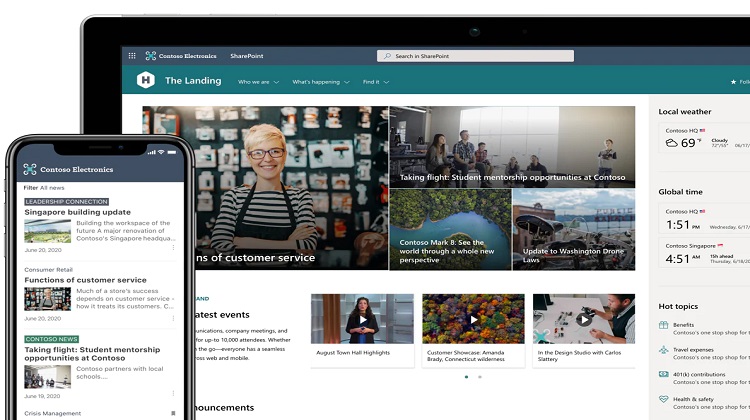
Microsoft SharePoint is by far one of the most useful products for business in the Microsoft 365 suite of apps and services. Whether its used for creating and hosting websites, intranet, or collaboration in departments and teams, SharePoint has a diverse and expansive array of features and capabilities that any business can benefit from. In particular, the ability in SharePoint to create sites is what makes SharePoint so diverse. We discussed this with TechQuarters, a London-based Microsoft Partner who have provided business IT support London-based companies have used for years. They explained how SharePoint sites work, and how they can be used by businesses.
What is SharePoint?
Firstly, let’s look specifically at what SharePoint is, precisely. In truth, there are a number of different products and services under the SharePoint name banner. In this article, we are talking about SharePoint Online, or SharePoint in Microsoft 365 – which is the most widely used SharePoint product in the world. SharePoint Online is a cloud-based service that is primarily used for file sharing and storage, but can also be used for communications with teams and departments. According to TechQuarters, depending on what you want to do on SharePoint, you will need to create the right type of site.
What Are Sites?
In SharePoint, a site is an information container. Sites have a rich user interface – hence the name, as they look very similar to a webpage – and are highly configurable; in fact, SharePoint consultancy is a popular B2B service, as designing a SharePoint site in the right way can be a huge difference to functionality and productivity. Within a site, there are components known as Web Parts. These are the building blocks of a site, and are what makes the design and interface of a site unique; site templates usually come pre-populated with web parts, because they are meant to be easily changeable and configurable.
There are two different types of site which can be created in SharePoint:
-
Teams Sites
This type of SharePoint site is used for when you need a digital workspace where a work group or team can collaborate together – whether this involves producing project deliverables, planning an event, tracking the status of tasks, or simply brainstorming ideas.
In SharePoint, there is something called a content author – a user that is able to create and edit any and all content in a site they are in. With Team Sites, every member is a content author, because the emphasis of the site is on collaboration and democratic decision-making.
Even though, oftentimes, teamwork involves each member having individual assignments that they work on solo, it is still worth having a shared space where assignments can be delivered and tracked – this is precisely what a Team Site is for.
-
Communication Sites
An important part of having an organisation – and maintaining a corporate culture – is having the means to broadcast information to the entire organisation, or a department, or a team. This is what a Communication Site is meant for. These sites often have a large number of members in it – it could be the entire organisation (or sometimes even more) – to make it easier for an organization to share information. A Communication Site on SharePoint works in much the same way as a company intranet – it provides a private and secure place for a company to share information to all of its employees and stakeholders. Some of the uses for a communication site, as listed by Microsoft themselves, includes:
- Creating a company, department, or project portal
- Sharing company news, events, or announcements
Communication sites are designed around sharing information, and so they are generally designed with a highly visual interface. This also means that only a small group of members in a communication site will be content authors, while the majority of members will be read/view-only members, as the purpose of the site is less about collaboration, and more about keeping stakeholders updated on company news.



